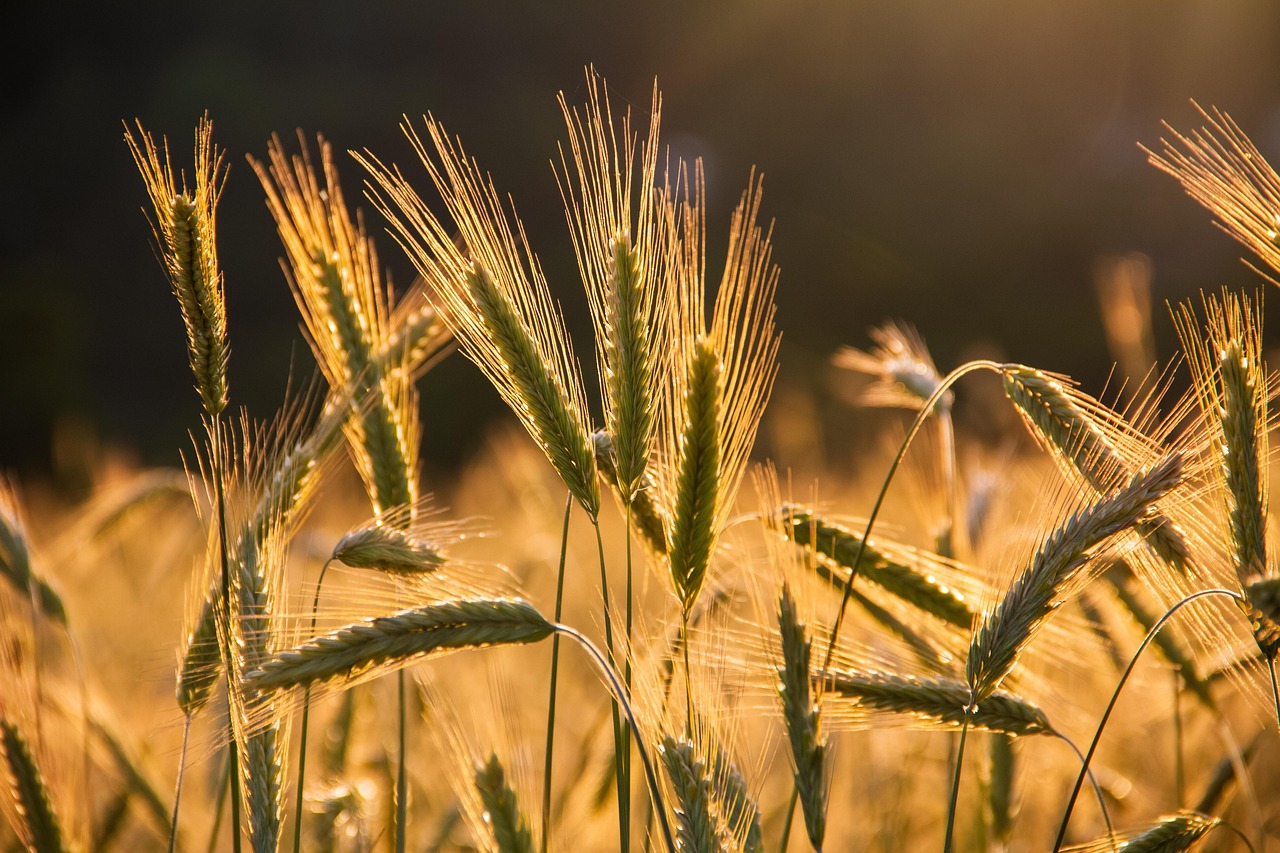To harvest and store cucamelon tubers for replanting, wait until the foliage dies back in late fall. Carefully dig up the tubers, ensuring minimal damage. Clean them gently and store in a cool, dry place in breathable containers, like paper bags, to prevent rot.
Understanding Cucamelons

Cucamelons, also known as Melothria scabra or Mexican sour gherkins, are unique plants that resemble miniature watermelons. They are native to Central America and are cherished for their refreshing taste and versatility in culinary dishes. These plants produce small, flavorful fruits that can be consumed fresh or pickled. As a perennial in warmer climates, cucamelons can also be grown as annuals in cooler regions.
One of the fascinating aspects of growing cucamelons is their ability to produce tubers. These tubers serve as a storage organ for the plant, allowing it to survive through adverse conditions and grow again when the environment is favorable. Understanding how to properly harvest and store these tubers is essential for successful replanting in subsequent seasons.
The Lifecycle of Cucamelons
The lifecycle of cucamelons begins with seed germination in spring. The young plants grow rapidly, requiring adequate sunlight and water. As they mature, they produce fruit and develop tubers underground. These tubers are rich in nutrients and help the plant sustain itself through the winter months.
Once the growing season ends, typically after the first frost, it is crucial to harvest the tubers. This process ensures that the plant can continue its lifecycle the following year. Proper harvesting and storage techniques can significantly affect the viability of the tubers for replanting.
Harvesting Cucamelon Tubers
Harvesting cucamelon tubers involves a few key steps to ensure they remain healthy for future growth. Timing is essential; wait until the leaves of the plant have died back naturally. This usually occurs in late fall, signaling that the tubers have reached maturity.
When harvesting, use a garden fork or spade to carefully lift the tubers from the soil. It is important to avoid damaging them during this process, as any cuts or bruises can lead to rot during storage. Gently loosen the soil around the base of the plant before lifting it to minimize harm to the tubers.
Cleaning the Tubers
After harvesting, clean the tubers thoroughly. Remove any excess soil by gently brushing them with your hands or a soft cloth. Avoid using water at this stage, as moisture can promote rotting during storage. Ensure that all debris is removed to keep them healthy.
Storing Cucamelon Tubers
Once cleaned, it is time to store the cucamelon tubers properly. The right storage conditions are vital for maintaining their viability until replanting season.
- Temperature: Store tubers in a cool location, ideally between 40°F and 50°F (4°C to 10°C).
- Humidity: Keep humidity levels low to prevent mold growth and decay.
- Containers: Use breathable containers like paper bags or mesh bins for optimal air circulation.
Using proper storage techniques will help preserve the health of your cucamelon tubers. With care, they will be ready for replanting in the spring, allowing you to enjoy another fruitful growing season.
| Aspect | Details |
|---|---|
| Ideal Harvest Time | Late fall after foliage dies back |
| Storage Temperature | 40°F to 50°F (4°C to 10°C) |
| Recommended Containers | Paper bags or mesh bins |
By following these steps for harvesting and storing cucamelon tubers, you can ensure a successful replanting season, making the most out of this unique and rewarding plant.
Preparing for Replanting Cucamelon Tubers
After successfully harvesting and storing your cucamelon tubers, the next step is preparing them for replanting. This involves selecting the right time, ensuring proper soil conditions, and understanding the best practices for planting to promote healthy growth.
Choosing the Right Time to Replant
The optimal time to replant cucamelon tubers is in early spring, after the last frost date in your area. Cucamelons thrive in warm conditions, so it is essential to wait until the soil temperature reaches at least 65°F (18°C). This will help ensure that the tubers can sprout successfully and establish themselves quickly.
- Check Local Frost Dates: Using a gardening zone map can help you determine when the last frost typically occurs in your region.
- Soil Temperature: Use a soil thermometer to check the temperature before planting.
Preparing the Soil
Healthy soil is crucial for the successful growth of cucamelons. Preparing the soil ahead of planting will create a favorable environment for the tubers. Consider the following steps:
- Choose an Appropriate Location: Select a sunny spot in your garden that receives at least 6 hours of sunlight daily.
- Test Soil pH: Cucamelons prefer slightly acidic to neutral soil, with a pH of around 6.0 to 7.0. You can use a soil testing kit to determine pH levels.
- Amend the Soil: Based on your soil test results, you may need to amend the soil. Incorporate organic matter such as compost or well-rotted manure to improve fertility and drainage.
- Till the Soil: Loosen the soil to a depth of at least 12 inches. This will help the tubers establish roots more easily.
Planting Cucamelon Tubers
When you are ready to plant, follow these guidelines to ensure that your cucamelon tubers get off to a good start:
Planting Depth and Spacing
Proper planting depth and spacing are critical for healthy growth. Here are some recommendations:
- Depth: Plant each tuber about 2 to 4 inches deep into the soil.
- Spacing: Space tubers 12 to 18 inches apart to allow for adequate air circulation and growth.
Caring for Newly Planted Tubers
Once planted, it is important to care for your cucamelon tubers properly. This includes watering, mulching, and monitoring for pests:
- Watering: Water the tubers thoroughly after planting. Keep the soil consistently moist but not waterlogged as they begin to sprout.
- Mulching: Apply a layer of organic mulch around the plants. This helps retain moisture and suppress weeds.
- Pest Monitoring: Regularly check for pests such as aphids or cucumber beetles. Early intervention can prevent damage to your plants.
Supporting Growth: Trellising and Maintenance
Cucamelons are climbing plants and benefit from vertical support as they grow. Providing a trellis or support system can enhance air circulation and reduce disease risk.
Trellis Options
There are several trellis options suitable for cucamelons:

- Wire Fencing: A simple wire fence can provide sturdy support for climbing vines.
- Trellis Netting: Use lightweight netting stretched between two posts for easy climbing.
- Cages: Tomato cages can also work well for supporting cucamelons as they grow.
As your cucamelons grow, continue to monitor their needs. Providing regular care will result in a bountiful harvest during the growing season.
Harvesting Cucamelons: Timing and Techniques

As the growing season progresses, knowing when and how to harvest cucamelons is crucial for enjoying their unique flavor and ensuring that you can replant the tubers effectively. Proper harvesting techniques will help you gather the fruit while also ensuring that the plant remains healthy.
Timing Your Harvest
Timing is essential when it comes to harvesting cucamelons. The ideal time to pick these fruits is when they are about the size of a grape, typically 1 to 2 inches in length. Harvesting at this size ensures that the cucamelons are crisp and flavorful.
- Color Check: Look for a bright green color without any yellowing, which indicates ripeness.
- Firmness: The fruit should feel firm to the touch, indicating that they have reached their prime.
- Regular Picking: Harvesting regularly encourages the plant to produce more fruit. Aim to check the plants every few days during peak production.
Harvesting Techniques
When it comes to harvesting cucamelons, gentle handling is crucial to avoid bruising the fruit. Follow these techniques for a successful harvest:
- Use Pruners or Scissors: Instead of pulling the fruit from the vine, use clean garden shears or scissors to cut them off. This minimizes damage to both the fruit and the plant.
- Harvest Early in the Day: Pick cucamelons in the morning when temperatures are cooler. This helps maintain their crispness and flavor.
- Avoid Overripe Fruits: Check for fruits that may have been left too long on the vine. Overripe cucamelons can become soft and lose their desirable flavor.
Post-Harvest Handling
Once harvested, handling cucamelons properly is key to maximizing their shelf life and flavor. Here are some important steps to follow:
Cleansing and Storage
After harvesting, it is important to clean and store your cucamelons correctly:
- Gently Rinse: Rinse the cucamelons under cool water to remove any dirt or debris. Be careful not to bruise them during this process.
- Dry Thoroughly: Pat them dry with a clean towel or let them air dry on a clean surface. Excess moisture can lead to spoilage.
- Storage Options: Store cucamelons in a breathable container such as a basket or ventilated bag in the refrigerator. This helps maintain freshness.
Using Freshly Harvested Cucamelons
Cucamelons can be enjoyed in a variety of ways, adding versatility to your culinary repertoire:
- Raw Snacks: These crunchy fruits make a delightful addition to vegetable platters or can be eaten straight from the vine.
- Picking: Pickle cucamelons in brine for a tangy treat that pairs well with sandwiches and cheese plates.
- Salsas and Salads: Incorporate sliced cucamelons into salads or salsas for a refreshing twist.
Preparing for Next Season
After harvesting, it is essential to prepare for the next planting season. This involves proper care of remaining plants and tubers as well as planning for future growth.
Maintaining Soil Health
Keeping your soil healthy after harvest will set you up for success in the next growing season:
- Add Organic Matter: Incorporate compost or well-rotted manure into your soil after harvest to replenish nutrients.
- Cover Crops: Consider planting cover crops during the off-season. This helps prevent soil erosion and adds nutrients back into the ground.
- Avoid Soil Compaction: Limit foot traffic in garden areas to maintain soil structure and health.
Planning for Future Harvests
As you prepare for next season, take note of what worked well and what can be improved. Consider keeping a gardening journal where you can document your experiences, including:
- Plant Varieties: Note which varieties of cucamelons thrived best in your conditions.
- Pest Issues: Record any pest problems you encountered and how you addressed them.
- Tubers Storage Success: Reflect on your tuber storage methods and plan any adjustments for better preservation.
This preparation will help ensure another successful season of growing and harvesting cucamelons in your garden.
Common Challenges and Solutions in Growing Cucamelons

While growing cucamelons can be a rewarding experience, it is not without its challenges. Understanding these potential issues and knowing how to address them can significantly improve your gardening success.
Pest Management
Cucamelons, like many garden plants, can attract pests. Here are some common pests and solutions to manage them effectively:
- Aphids: These small insects can cluster on new growth. Use insecticidal soap or neem oil to control infestations.
- Cucumber Beetles: These pests can damage both leaves and fruit. Consider using row covers early in the season to protect young plants.
- Spider Mites: Often found in hot, dry conditions, spider mites can cause leaf yellowing. Increase humidity around the plants and regularly mist them to deter these pests.
Disease Prevention
Cucamelons can also be susceptible to various diseases. Here are a few common issues and their preventive measures:
- Powdery Mildew: This fungal disease appears as white spots on leaves. Ensure good air circulation by proper spacing and avoid overhead watering.
- Root Rot: Caused by overwatering and poor drainage, root rot can be fatal. Plant in well-draining soil and ensure pots have drainage holes.
- Fusarium Wilt: This soil-borne fungus causes wilting. Rotate crops annually and practice good sanitation to reduce the risk.
Nutritional Benefits of Cucamelons
Cucamelons not only add unique flavor to dishes but also come with various health benefits. Here are some reasons to include them in your diet:
- Low in Calories: Cucamelons are low in calories, making them an excellent choice for healthy snacking.
- Rich in Antioxidants: They contain antioxidants that help combat oxidative stress in the body.
- Hydration: With high water content, cucamelons contribute to hydration, especially during hot weather.
- Vitamins and Minerals: They provide essential vitamins like vitamin C and minerals such as potassium, supporting overall health.
Final Thoughts
Growing cucamelons offers a unique opportunity to enjoy a flavorful fruit while participating in a rewarding gardening experience. By understanding how to harvest and store tubers, prepare for planting, and manage challenges effectively, you can maximize your yields and enjoy this delightful plant year after year.
The key aspects to remember include timing your harvest correctly, using proper techniques for planting and caring for the plants, and being proactive about pest and disease management. Keeping a gardening journal will allow you to reflect on your experiences, leading to continuous improvement in your gardening practices.
Cucamelons not only enhance your garden’s diversity but also provide a nutritious addition to your meals. As you prepare for another growing season, embrace the lessons learned from previous experiences, and let your enthusiasm for cucamelons drive your gardening journey. With patience and attention to detail, you’ll find joy in both the process of growing and the delicious fruits of your labor.
